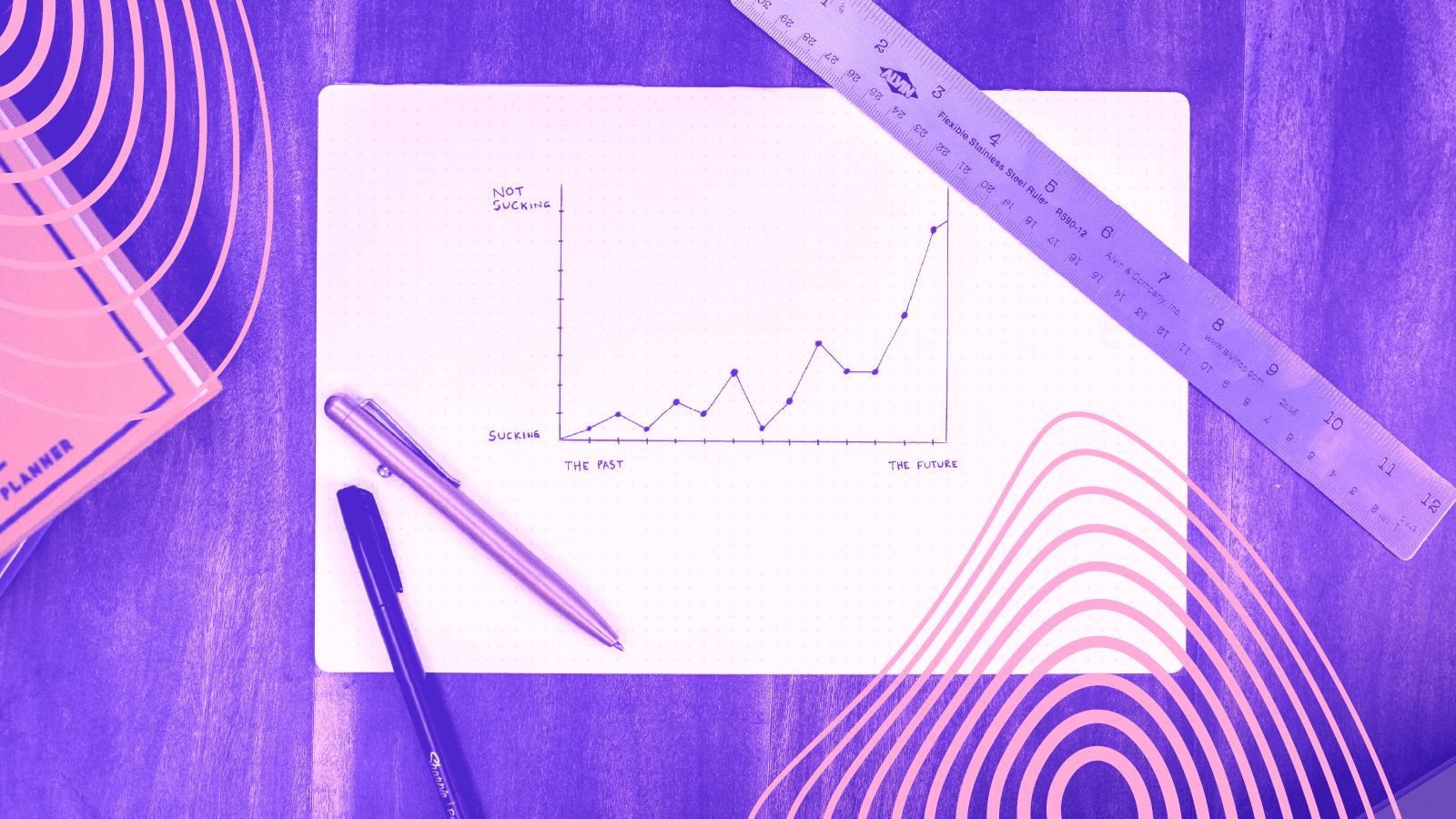Monitoring customer churn is crucial when it comes to keeping tabs on your subscription business. But is that all there is?
If your churn rate is creeping up, what does it tell you? How do you put an action plan together to tackle it?
It’s one thing to know the numbers, but if you don’t know what they mean, you could be leaving money on the table.
That’s where customer churn analysis comes in.
Table of Contents
What role does customer churn prediction play in managing subscription businesses?
Customer churn prediction is pivotal in preemptively identifying subscribers who are likely to cancel their services. By leveraging data analytics, businesses can forecast potential churn, enabling them to engage at-risk customers with personalized retention strategies before they decide to leave. This predictive approach not only enhances customer satisfaction but also secures revenue by reducing the likelihood of churn.
What is Churn Analysis?
Customer churn analysis is the process of using your churn data to understand:
- Which customers are leaving?
- Why are they leaving?
- Which customers are likely to churn shortly?
- What can you do to reduce churn?
As you may have guessed, churn analysis goes beyond just looking at your customer churn rate. It’s about discovering the underlying causes behind your numbers.
Ultimately, successful churn analysis will give you the valuable insights you need to start reducing your business’s customer attrition rate.
Integral to churn analysis is the aspect of customer churn prediction, which employs advanced analytics to foresee which customers might leave in the near future. This predictive insight allows businesses to not just react to churn, but to anticipate and mitigate it, by understanding and addressing the specific needs and concerns of at-risk customers.
Why Does Churn Analysis Matter? 4 Reasons
Churn analysis helps you identify pain points throughout the entire customer journey. Understanding those pain points then opens up avenues to improve your products, services, and communication.
Sure, customer churn is inevitable. But if you see it as an opportunity to learn, improve customer retention, and close any leaks in your revenue stream, you’ll be able to take your subscription business to the next level.
Here are the four biggest reasons that your company should start prioritizing customer churn analysis, ASAP.
1. Objectively show your product’s weaknesses (and strengths)
Churn analysis often reveals patterns that indicate common motivators for customers to leave you, such as price sensitivity or poor product adoption.
It also demonstrates how customers engage with your product throughout its lifecycle. You can use these learnings to maximize what loyal customers already love and improve on what at-risk customers don’t.
2. Uncovers opportunities for better communication
Improving customer experience comes with a constant understanding of customer expectations and meeting their needs. Churn analysis reveals trends in customer behavior at every touchpoint.
Personalized engagement through the communication channels that your customers prefer is one way to make customers feel valued and appreciated. It’s also a great customer retention strategy.
3. Helps you predict and thus reduce future churn
Churn analysis involves analyzing historical customer data to make churn prediction possible. You can also use customer lifetime value (LTV) analysis to understand customers at every lifecycle stage and who’s sticking with your product.
That means you can be proactive in your approach and prioritize improving retention when you notice the red flags indicative of churn.
Why is customer churn prediction critical for reducing future churn?
Customer churn prediction is crucial for preemptively tackling potential losses. By analyzing historical data and customer behavior patterns, predictive models can identify warning signs of churn. This enables businesses to proactively implement targeted retention strategies, significantly lowering the chances of customers leaving and thus, effectively reducing future churn rates.
4. Acts as your secret weapon during a crisis
Churn analysis is beneficial at all times, but even more so in a downturn or recession. New customer acquisition cost (CAC) is 5x higher than the cost of retaining existing customers.
Here’s one example: Chargebee’s customer Rented analyzed the local impact of COVID on customer churn and gave a limited-time discount offer. It helped in retaining 80% of their customers!
4 Easy Steps for Churn Analysis
Too much data can be overwhelming and lead to analysis paralysis. We’ve all been there. So instead of jumping headfirst in the whirlwind of data and hoping you get lucky with actionable insights, it’s a good idea to start with a framework.
Try following these three simple steps for churn analysis:
- Step 1: Incorporate predictive analytics
- Step 2: Invest in subscription analytics
- Step 3: Analyze customers by segment
- Step 4: Pinpoint what type of churn is happening — then take action
Let’s dive into each of these steps a little deeper.
Step 1: Incorporate predictive analytics
A vital step in churn analysis is incorporating customer churn prediction. Businesses should leverage subscription analytics tools that offer predictive capabilities, enabling them to identify at-risk customers through data-driven insights. By integrating predictive analytics into the churn analysis framework, companies can create more effective, personalized strategies for customer retention, addressing issues before they lead to churn.
Step 2: Invest in subscription analytics
Subscription analytics tools allow you to see all your metrics – including churn – at a single glance. You have all your data and metrics in one place, with multiple ways of slicing and dicing it.
For example, take a look at Chargebee’s “Churn Watch” dashboard:
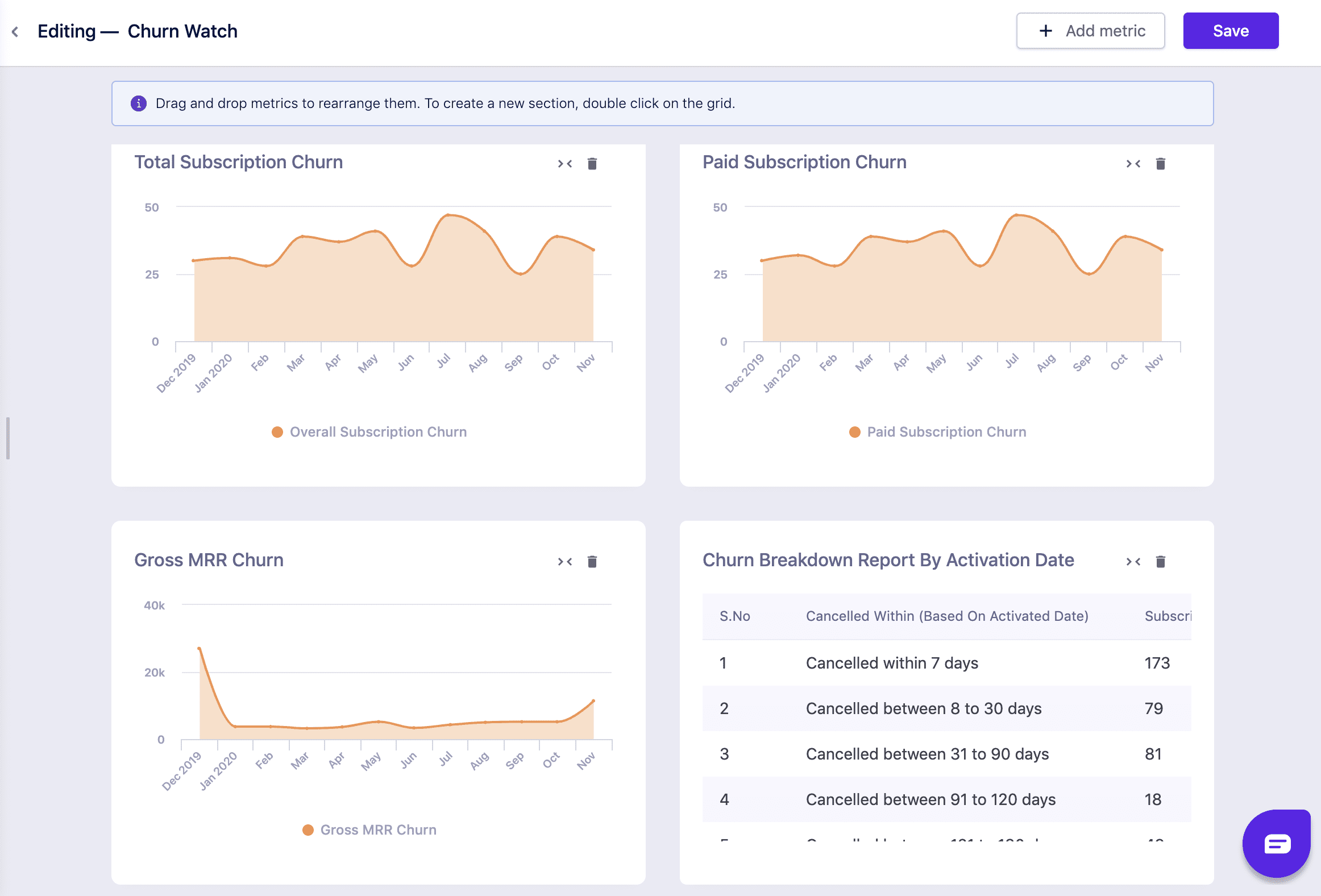
Churn analysis helps you proactively identify customers who are likely to churn. Creating alerts to notify you about real-time changes is a great way to stay on top of your churn metrics. You can create such custom alerts in Chargebee’s RevenueStory.
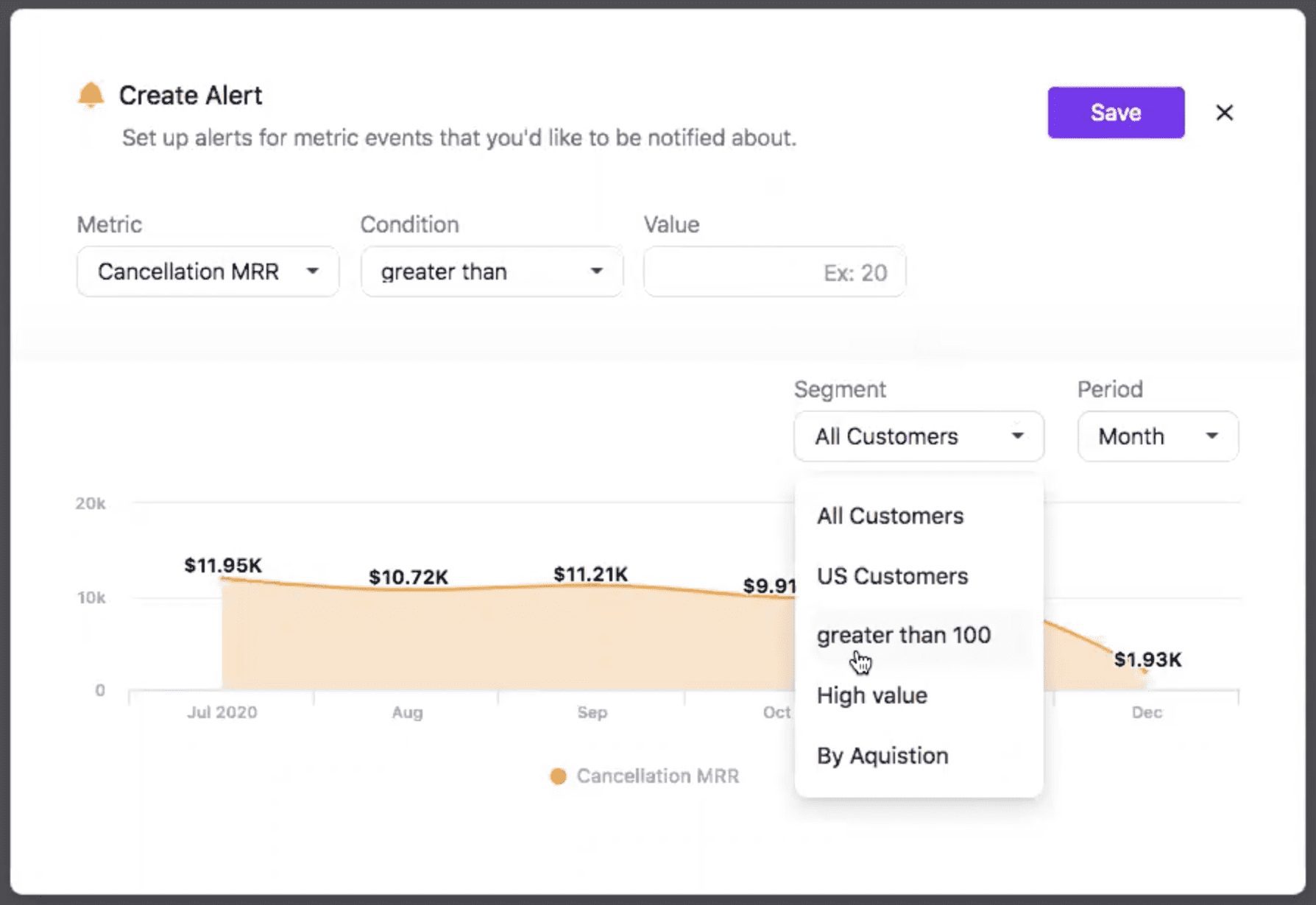
RevenueStory is a subscription analytics platform built in tandem with our billing system software. It allows you to drill down to the deepest layer of your key metrics and reports, including customer churn.
Step 3: Analyze Customers by Segments
Customer segmentation is the process of grouping customers with similar traits. It can help you uncover trends in customer churn.
We recommend a tool that allows configurable segmented analysis of churn. You should be able to analyze churn by revenue, business type, or demographics.
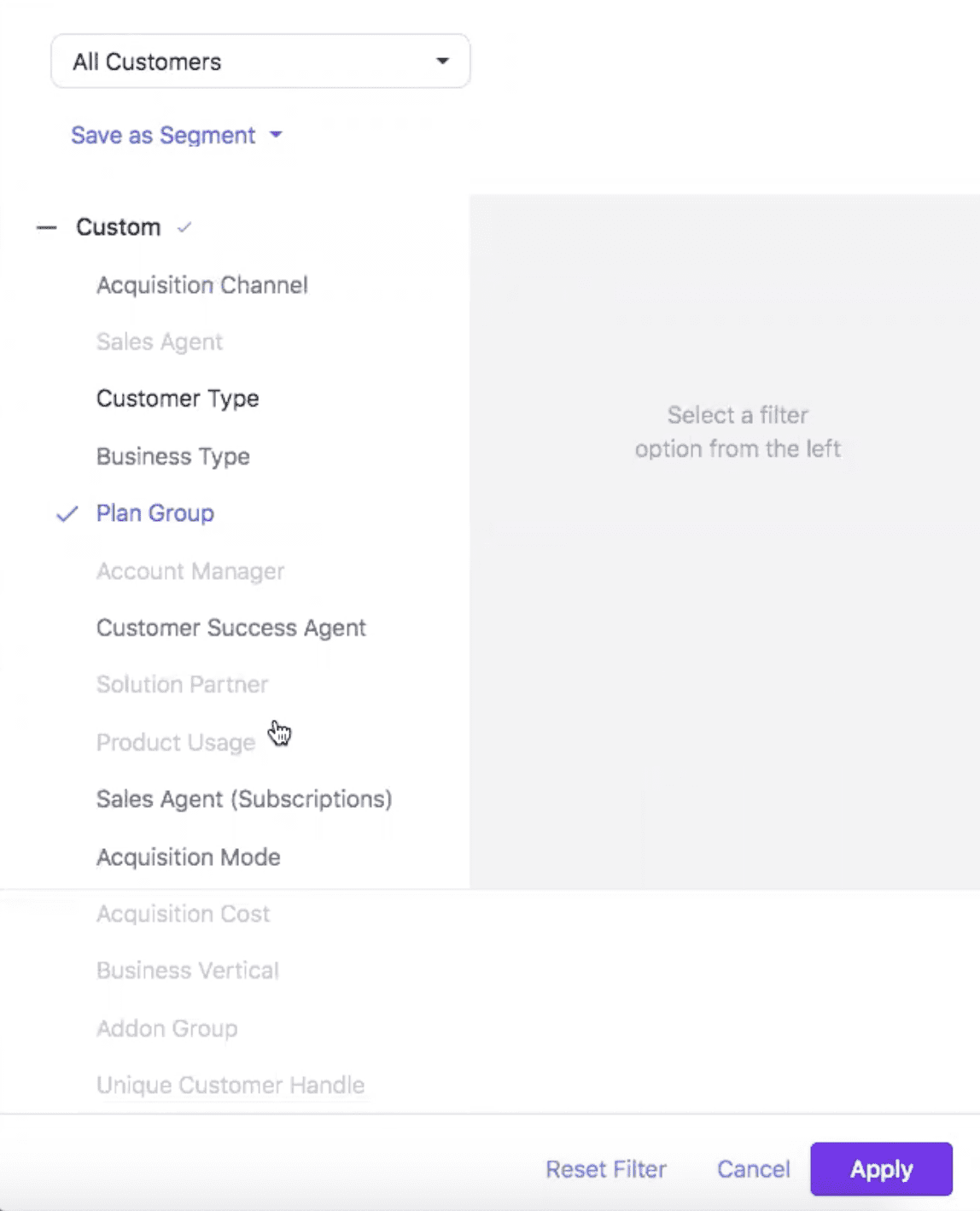
You can conduct churn analysis across customer segments in 3 main ways.
1. Churn Analysis by Revenue
This type of segmentation divides different types of customers into groups based on their revenue.
For example, early-stage start-ups might be churning because of budgetary issues, and you can reduce this churn by offering them discounts and flexibility in payment terms. For enterprises, you need to ensure that your product has scaled along with the company’s growth.

2. Churn Analysis by Industry
This analysis helps in preventing churn by implementing specific measures for each sector.
For instance, the global downturn induced by the COVID pandemic crippled the travel industry, but e-learning saw a surge as students took to remote learning. You can implement the below measures to reduce churn in sectors facing a slowdown.
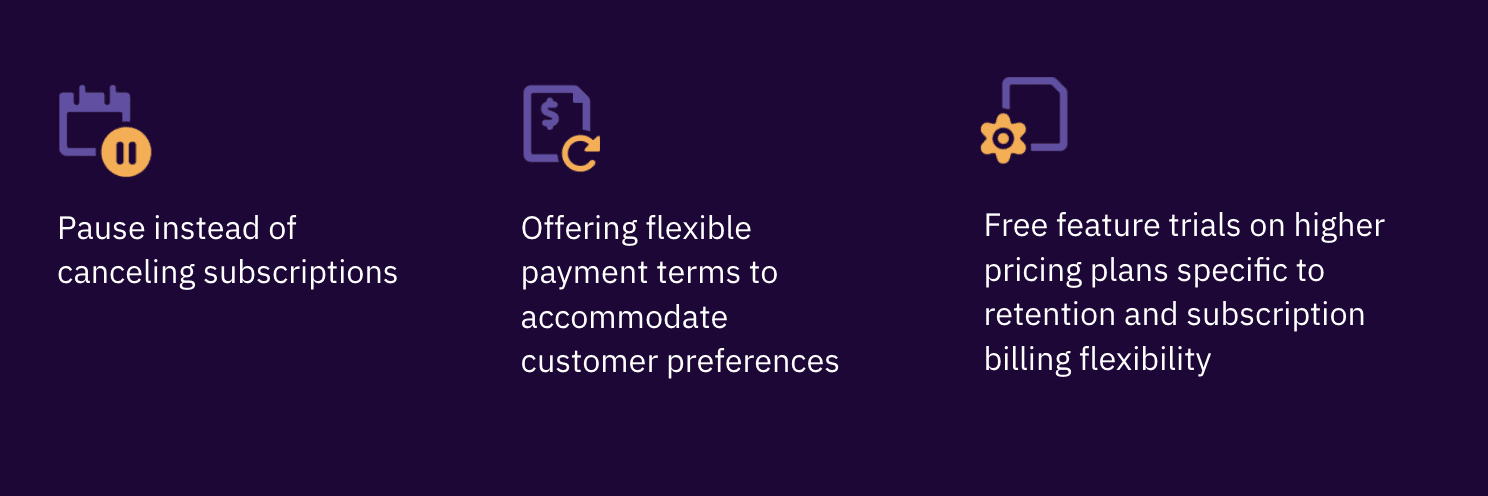
3. Churn Analysis by Geography
Knowing your customer’s location adds context to why they would be churning. Tax regulations, payment gateways, and payment processing are different for every country, affecting your product’s adoption.
For SaaS businesses, it is crucial to comply with the local sales tax guidelines. Your subscribers could be churning due to a lack of payment options or a lack of compliance with regulations, and this analysis is a great way to spot such trends.
Step 4: Pinpoint What Type of Churn is Happening — Then Take Action
You need to know the reasons for customer churn in order to formulate strategies to reduce it. The good news? Once you’ve pinpointed what type of churn is occurring, you can take specific action to address it.
Here are some types of customer churn and the action steps you can take to reduce it.
1. Early or Late Stage Churn
Analyzing the timing of the churn adds depth to your churn analysis. There are various ways to look at this. You can start by analyzing churn by activation dates. It tells you how soon (or not) the customer churned after activating the product.
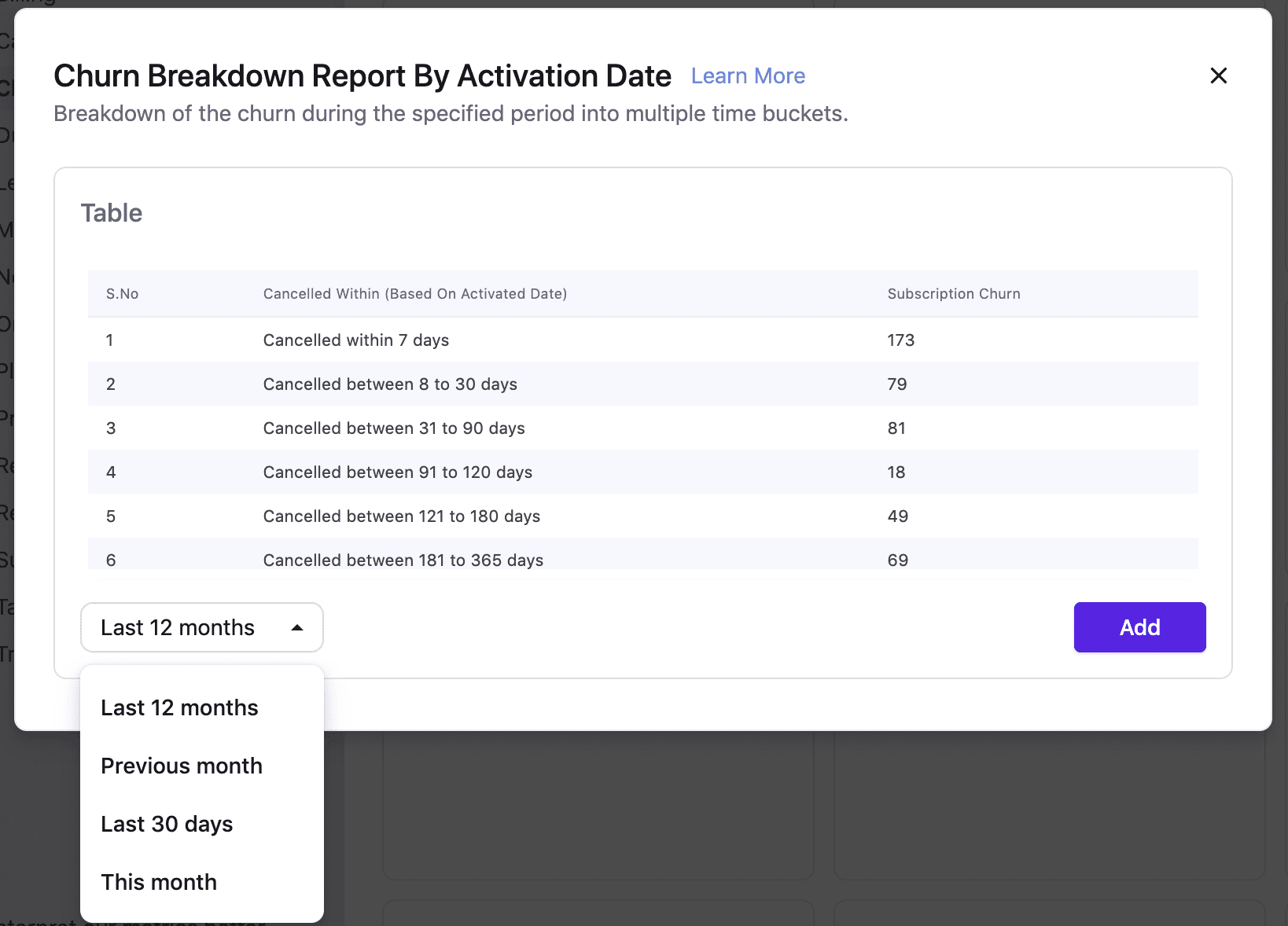
Another way to analyze this is by looking at the MRR retention cohorts. The MRR retention cohort can give you a visualization of MRR addition, growth, and churn behavior based on both when you acquired the customer and what happened in a particular month.
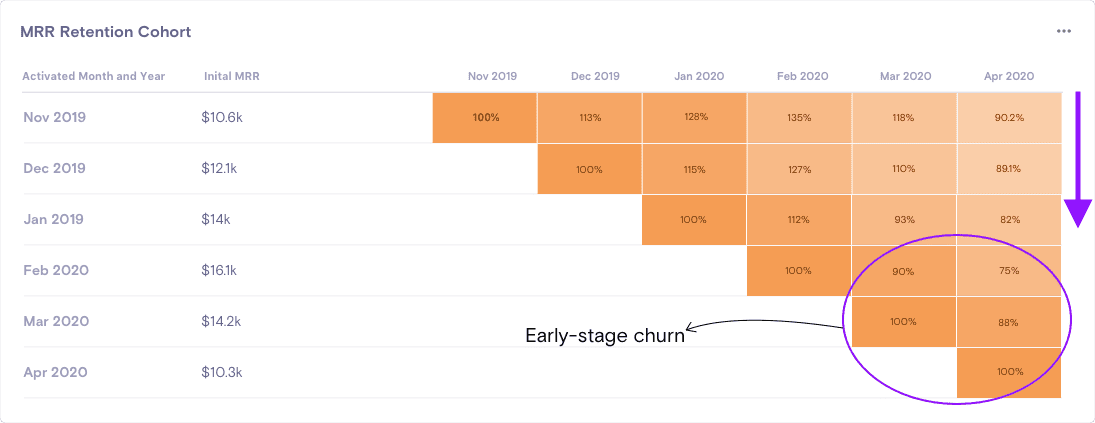
Moving down the first row shows you how much new revenue you could acquire month on month while going across columns shows how much that cohort expanded or contracted.
In the cohort above, you can see an adverse impact on revenue growth across customers in April. But what’s more interesting is that customers acquired in recent months seem to have churned more than the older ones – indicating a high early-stage churn.
To reduce these types of churn, you’ll want to look deeper into the “why.” From there, you can implement some of the strategies mentioned in the following sections.
2. Voluntary Active Churn
These are customers who proactively cancel your product or service. This type of churn can occur due to various reasons, such as poor onboarding, poor customer service, or switching to a competitor.
Voluntary churn likely makes up a large chunk of your lost revenue, and you should focus most of your strategic initiatives on preventing it. Here are some ideas:
- Ask for customer feedback, and then take action based on responses
- Improve your customer success process, from onboarding to ongoing communication efforts
- Make sure you’re targeting customers that are the right product-market fit
- Educate customers on how to get the most benefit from your product
The key to managing voluntary churn is to be proactive and make reduction strategies a part of your regular business operations. Don’t wait until the problem is out of control — start your efforts to maximize customer satisfaction today.
3. Involuntary Passive Churn
This type of churn is a leak in your revenue stream. Involuntary churn occurs when the customer’s payment is not completed for reasons such as:
- When an expired card is used
- Hard declines happen when a card is reported lost or stolen.
- Soft declines occur when a credit card has maxed out its limit.
- Banks can decline the card (due to suspected fraudulent activity, frozen accounts, etc.)
This churn is relatively easier to curb and can be solved by implementing smart dunning workflows. Chargebee’s dunning features improved monthly recurring revenue by 35% and reduced churn by 100% for Whiteboard.
4. The “Good” Churn
Not all churn is bad! Sometimes churn tends to weed out customers that are a bad fit for your product, service, or business model.
Another example of ‘good’ churn is when customers leave after their short-term need for your product is satisfied, like an event or a short-term project. It’s also called “happy” churn.
These customers also tend to reactivate their subscriptions later, so one way to track “happy churn” is to track reactivation MRR.
5. Downgrade Churn
As the name suggests, this churn occurs when customers downgrade to a lower-tier plan, resulting in downgrade MRR. It could happen due to:
- Price sensitivity
- Value proposition misalignment
You can reduce this churn by experimenting with your product packaging and pricing. To reduce downgrade churn, think of ways to pack more value and features into your customer’s current plan.
